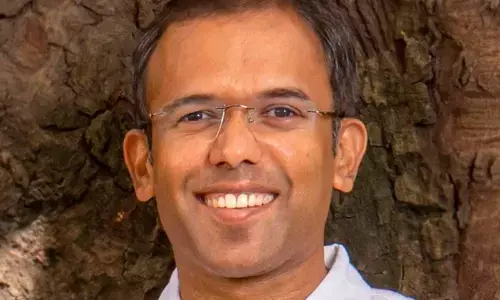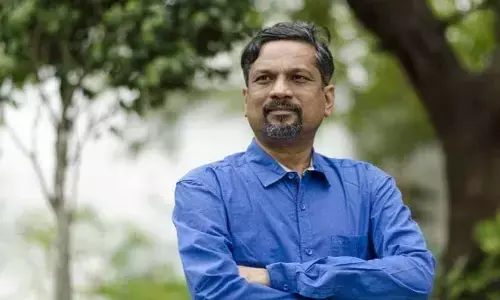The show will go on

Obviously, both TV and print will remain major mass media but will gradually start declining. Government, on its part, has to be a benign facilitator, specially the maverick regulator -- Telecom Regulatory Authority of India, which frames rules for Broadcast and Online sectors without adequate domain knowledge. This is essential for both growth of the industry and for consumer convenience
Almost all of us have spent more time during the lockdown watching TV and online entertainment than usual. Amidst several reruns across channels and watching news (or what masquerades as news) many of us are catching up on new programming on one of the dozen odd streaming platforms.
Of course, avid cinegoers are missing their regular cinema visits. Some of us who are fond of theatre and concerts are getting our fix via virtual concerts. As we gradually and grudgingly begin our usual routines, will entertainment be back to its regular self is a question which we need to answer.
As has been announced, some films are being released directly on digital platforms without waiting for cinemas to open. There is a debate going on between cinema owners and producers whether this is a breach of business protocol. Well, to put this in the right perspective, let's understand some ground realities. Last year, India produced 1,800 films out of which only 600 found a theatrical release. Most others struggled to get viewership even on TV or streaming platforms, a few were put up on YouTube and some remained unseen.
With only 9,000 screens, India is a hugely under screened country -- China has 60,000 and the US has 40,000 screens. Logically not more than six films should be released every week in cinemas. We average about 15. In my view, every film doesn't need a theatrical release. The larger than life cinema or the star-studded extravaganza both for commercial reasons and for all bells and whistles (like Atmos sound, Imax, 3D etc.) and a select few off-beat films for cinematic reasons do need large screen viewing. In time to come, at least half the movies will release non theatrically. This is a reality.
The cinemas are, however, not going to shut down. People will still go to watch some films in a darkened auditorium. The number may be less than before. Most cinemas, especially the multiplexes, get a substantial part of their revenue from Food & Beverages(F&B) sales and in theatre advertising to subsidise their costs. Box office revenue minus GST is then shared between cinema owners and producers/distributors. In the next few weeks this sabre rattling will give way to the same uneasy equilibrium as before.
The top 100 films (in all languages) will garner maximum eyeballs and revenue share. Another 200 odd films will get a patchy theatrical release, some films even getting as few as one or two shows a day. Multiplex owners actually need just the top 50 films to shore up their balance sheets. Let's also remember Tamil, Telugu, Malayalam, Bhojpuri, Bangla and other language movies constitute more than half the box office.
Uptil now, the only possible choice for many producers was to try and sell to one of the satellite channels or one of the streaming platforms. Since one does not, thank God for small mercies, require a license to make a film, India has been overproducing movies. The market cannot support financially especially when there are alternatives. Did you know that only 30 per cent of theatrical seats remain empty every year? Ultimately, the audience will decide what they want to watch in a cinema and what at home.
A trend which is irreversible is original content, including films, will be screened on streaming platforms like Netflix, Amazon, Hotstar, Zee 5 and Jio who will also start commissioning straight to digital films. These films will have smaller budgets and hopefully richer and diverse content. Similarly, while for the next few years Broadcast Television will be the mainstay of mass entertainment, web series will find more and more takers. One thing is certain -- budgets will have to come down for both films and Broadcast TV. In the short term, ad spends will contract.
As early as next year, online advertising will emerge as the biggest component of marketing budgets. Obviously, both TV and print will remain major mass media but will gradually start declining. Government, on its part, has to be a benign facilitator, specially the maverick regulator -- Telecom Regulatory Authority of India, which frames rules for Broadcast and Online sectors without adequate domain knowledge. This is essential for both growth of the industry and for consumer convenience.
Social distancing and other precautionary measures, as seen recently on flights and at airports, will be the norm in post-Covid world. This will mean reducing crowding on film and TV studios, leaner crews and an end to the entourage economy perpetrated by the stars. Producers Guild along with Workers Federation and state and central governments are working on a new protocol for filming post Covid. In Chennai, they have already begun some shooting and post production. Recently, only a 20-member crew (a normal ad would have a 100-plus crew) led by director R. Balki shot a promo with Akshay Kumar for the Ministry of Health at Mumbai's Kamalistan Studios with elaborate health precautions (masks, social distancing, thermal reading) and sanitization regimes.
These safeguards are the way forward when regular filming starts. Most of marketing will shift to online promotion and Digital Out of Home (DOOH), reducing the extensive marketing budgets to more manageable ones. Stars and other professionals are bound to take a salary cut. At some point, lower budgets, AI and big data will unfortunately eliminate jobs. Media & Entertainment in India, which was growing around 15 per cent, will stutter for a while.
The biggest variable in this is the consumer. In the wake of an economic shakeout, discretionary spending may come down. One section of the people, arguably a quarter, will definitely reduce social outings. The younger demographic, meanwhile, is switching to online entertainment. In India, online gaming is still (less than a billion dollar annually) not big -- globally it is a $150 billion industry but recently a lot of mobile users are, at least, playing conventional games like Rummy and Ludo online. By next year, 30 per cent of all Indians may access online. Virtual concerts are here to stay.
In fact, from amateurishly produced shows during the lockdown, we will have slick concerts, operas and plays produced professionally and beamed live or recorded online. Music is already totally digital, other media will follow in the years ahead. Multiple choices on all multiple devices, some simultaneously. Meanwhile, the theater next door will remain open. The show will go on. The question is how many will turn up after the pandemic.
(Amit Khanna is a film-maker, writer and media veteran)



















